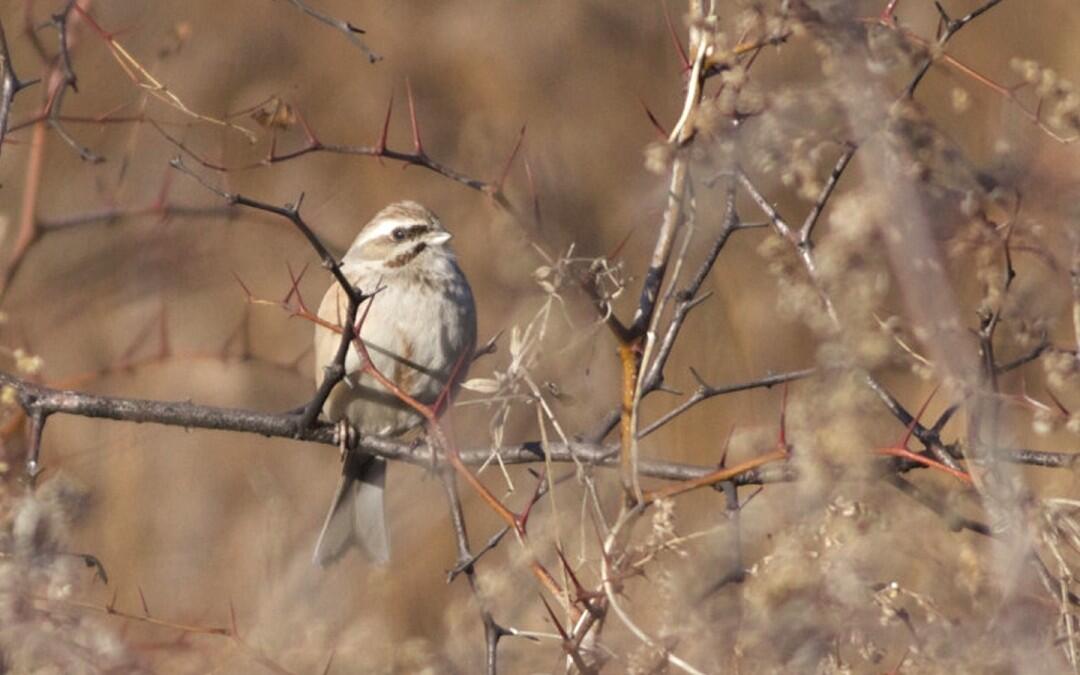Asia’s rarest bunting, the Rufous-backed Bunting Emberiza jankowskii, has been found wintering close to China’s capital – the first record of this globally threatened species in Beijing municipality for seventy-five years.
A single Rufous-backed Bunting was discovered at Miyun Reservoir, 80 km north-east of central Beijing, by local young birders Xing Chao and Huang Mujiao on 9 January 2016. By 13 January seven individuals had been found, with a remarkable nine buntings present on 15 January. (The municipality’s previous record was of two males seen near the Summer Palace in the winter of 1941.)
Rufous-backed Bunting Emberiza jankowskii – also known as Jankowski’s Bunting after Michel Jankowski, a nineteenth-century Polish zoologist exiled to Siberia – has declined drastically since the early 1970s, most likely as a result of the conversion of its grassland habitat to arable farmland and an increase in grazing livestock. This beautiful bunting is now known only from a restricted area of north-east China; the species formerly occurred in the far north-east of North Korea (its current status there is unknown) and the extreme south of the Russian Far East (there have been no Russian records since the 1970s). Consequently, the species is classified by BirdLife as Endangered.
Terry Townshend, a British birder living and working in Beijing, and the BirdLife Species Champion for Rufous-backed/Jankowski’s Bunting comments: “Given the relatively low density of birders in Beijing, it is possible that Jankowski’s Bunting has been overlooked in previous winters. However, I suspect that this winter is exceptional. Last year the government banned the growing of crops close to the reservoir, which provides drinking water for Beijing, so the area around the wetland has been left uncultivated. Grasses and other wild plants have produced a bumper crop of seed that is attracting large numbers of passerines – including a Beijing record flock of 5,600 Lapland Buntings at the end of November.”
The Hong Kong Birdwatching Society/BirdLife China Programme and China Bird Watching Society have been taking action for Rufous-backed Bunting on its breeding grounds in Inner Mongolia for several years, with surveys undertaken in 2014 discovering nine new breeding sites for the species. In addition, meetings have been held with the local authorities and a number of educational activities have been carried out at schools and villages close to its core breeding areas, to raise awareness of the bunting and its conservation.
Mike Crosby, BirdLife’s Senior Conservation Officer for the Asia Division, commented: “The discovery of a small flock of Rufous-backed Buntings close to Beijing is encouraging news for this little-known species, and perhaps indicates that at least part of the species’ population moves several hundred kilometres south from its breeding range during the winter. Improving our understanding of their wintering range is vital for our ongoing efforts to conserve this globally threatened songbird.”
To help with BirdLife’s work to save the species please visit our Save Jankowski’s Bunting Appeal page.
Projects on the breeding ground were aided by the Ernest Kleinwort Charitable Trust and Oriental Bird Club and were undertaken with the support of the BirdLife Preventing Extinctions Programme.
Source: birdlife.org











